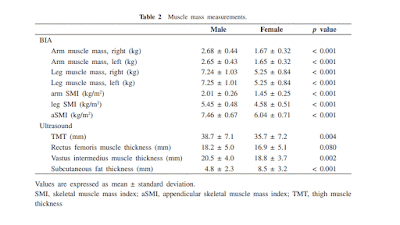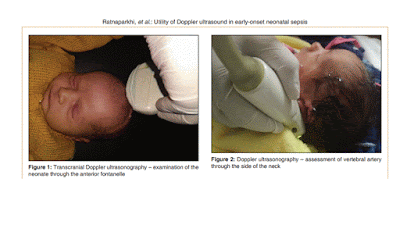ABSTRACT
Our
aim
of this study is to compare the thigh muscle thickness measurements obtained
using ultrasound and bioelectrical impedance analysis (BIA) methods, and to
investigate the validity and cutoff value of the ultrasonography.
We
analyzed
a total of 201 participants (99 male and 102 female participants, mean age,
66.2 years) participated in the annual health checkup in the Yakumo
Study, 2014. Thigh muscle thickness (TMT, sum
of the rectus femoris and vastus intermedius muscle thickness)
was measured using ultrasound at mid-thigh in the sitting position.
Appendicular skeletal muscle mass (aSMI) was
measured using BIA. Cutoff value of TMT was determined through the receiver
operating characteristic analysis. We defined sarcopenia
with the diagnostic algorithm of Asian Working Group for Sarcopenia.
TMT
was
significantly reduced in subject with sarcopenia
than in those without sarcopenia in
both gender. Muscle measurements obtained using the BIA methods (aSMI)
and ultrasound methods (TMT) showed a significant correlation, with a
correlation coefficient of 0.38 (P < 0.001). Cutoff value, sensitivity, and
specificity of TMT in diagnosis of muscle loss were 36 mm, 72.0%, and 73.9%,
respectively, for the male participants, and 34 mm, 72.2%, and 72.4%,
respectively, for the female participants.
In
conclusion,
the ultrasonography for thigh muscle might be a simple diagnostic method for sarcopenia.
Keywords:
ultrasonography, thigh muscle thickness, sarcopenia,
community-dwelling people, cut-off value






